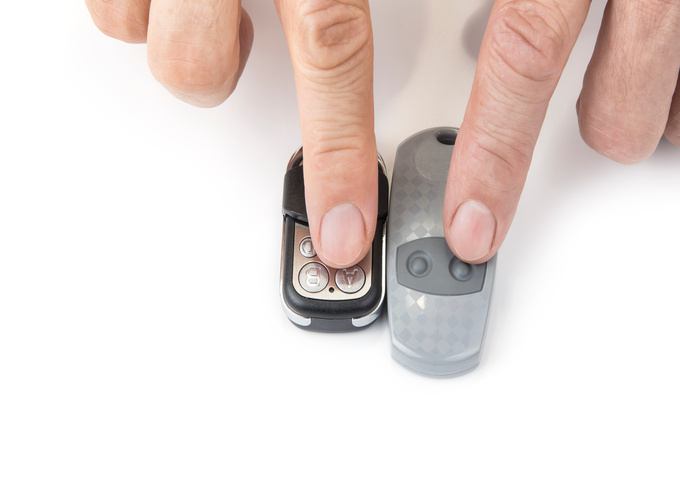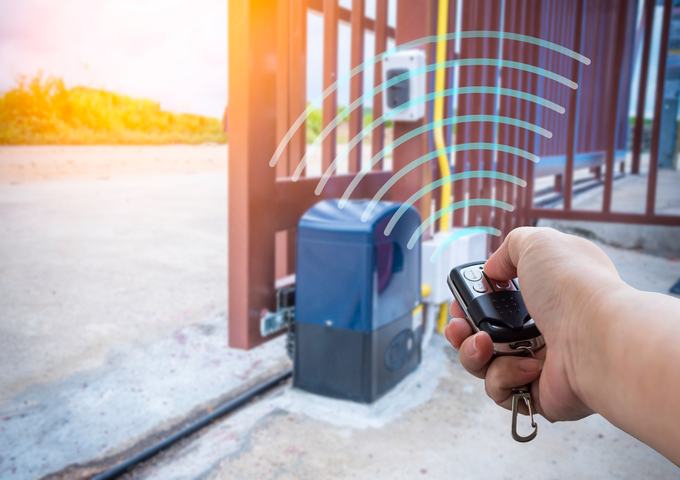When the light in your opener fails, convenience and safety suffer. Choosing the correct garage door opener light bulb prevents flicker, short lifespans, and remote-control glitches while delivering dependable illumination whenever the door activates.
A well-chosen solution boosts visibility, deters accidents, and makes late-night parking stress-free. It also reduces maintenance by surviving vibration and temperature swings common in garages.
A dependable garage door opener light improves safety and comfort every day.
How opener lights work
Most openers power the lamp from a small control board. The circuit turns on after activation, then shuts off using a timer. Some models add motion sensing, soft-start dimming, or smart features that extend utility beyond simple illumination.
The housing matters. Enclosed domes can trap heat. Older units limit wattage to protect plastic lenses and electronics. Modern models support LEDs but still require low interference emissions to keep remotes reliable.
Factor in usage patterns. Frequent cycling warms the bulb repeatedly. The right garage door opener light bulb withstands these thermal shocks without premature failure.
Choosing the right bulb
The safest choice balances brightness, durability, and compatibility. Garage fixtures add vibration and cold starts. Look for rough-service ratings, good surge tolerance, and radio-quiet electronics if you select LEDs.
Incandescent and halogen
Traditional lamps handle cold well and rarely interfere with remotes. They run hot and waste energy. Many opener manuals cap wattage, often around 60–100 watts. Verify your model’s label before installing anything hotter to avoid warping lenses or damaging circuits.
CFL
Compact fluorescents save energy but can be slow to brighten in cold garages. Some hum or strobe in vibration. If you use them, pick “instant-on” and “cold-weather” types. Still, many homeowners move to LED for faster, cleaner performance in this application.
LED
Quality LEDs give bright, efficient light and last for years. Choose bulbs tested for openers to minimize radio noise. Shielded drivers and good EMI filtering protect your remotes from interference while the garage door opens.
LED output varies wildly. Compare lumens, not watts. Around 800–1100 lumens suits most one-car bays. Larger spaces or darker walls may need more. The right garage door opener light bulb should match your space, not just your fixture.
Specialty “opener-safe” LEDs
Some brands market bulbs specifically for openers. They’re vibration-resistant, cold-rated, and engineered for low interference. These can solve persistent remote issues caused by cheaper lamps with noisy drivers.
If you need a phrase for shopping lists, search for light bulbs for garage door opener to find these tuned options. Check reviews and the opener’s compatibility notes, then choose based on lumen output and expected lifespan.
Brightness, color, and coverage

Brightness affects safety. Dim corners hide tools, tripping hazards, or critters. Aim for even coverage across the car’s path and storage zones. Higher-lumen bulbs reduce shadowing and help cameras or sensors work better at night.
Color temperature shapes visibility. Around 3000–4000K balances warm tone with crisp contrast. Cooler light can feel harsh on concrete. Match the bulb’s CRI above 80 for truer colors when reading labels or sorting hardware.
Diffusers influence the spread. Clear globes give punchy beams; frosted lenses soften glare. In small garages, frosted can be more comfortable when the lamp sits at eye level near the opener.
Heat, enclosures, and watt limits
Enclosed housings trap heat, shortening bulb life. Respect wattage limits printed near the socket. LEDs still create heat in their drivers. Excess heat ages capacitors and LEDs, causing early failure or flicker.
Choose the lowest wattage that reaches your lumen target. Keep domes clean so dust doesn’t insulate the bulb. Replace yellowed covers; they steal light and increase heat.
Interference and remote reliability
LED drivers can emit radio noise near the frequency used by remotes. Symptoms include reduced range, missed clicks, or intermittent behavior when the lamp is on. A carefully selected garage door opener light bulb minimizes this interference.
Try bulbs labeled “opener-safe,” “EMI-suppressed,” or “low-interference.” If issues persist, add a ferrite choke to the lamp leads, tighten ground screws, or use a different brand. Keep Wi-Fi extenders and routers away from the motor head if possible.
Durability in a tough location
Garages vibrate. Openers rattle, rails hum, and doors slam. A rugged garage door opener light bulb uses reinforced filaments or solid-state electronics secured against shock. LED models with foam potting or heavy drivers tolerate vibration better.
Cold weather stresses lamps. Choose bulbs rated to start at –20°C or lower if your climate is harsh. Heat kills too; in summer, ventilation matters. A bulb that survives both extremes saves money and hassle.
Energy cost and efficiency
Switching from an old 60-watt incandescent to a 10-watt LED cuts energy by over 80 percent. Timers limit runtime, but savings add up over the years. The best garage door opener light bulb balances low watt draw with strong lumen output and long life.
Consider utility rebates for efficient lighting. While small per bulb, rebates offset the premium for interference-suppressed LEDs. Add motion sensing or smart schedules to avoid unnecessary burn time.
Safety and sensors

Bright, even light helps the safety sensors near the floor “see” clearly. Shadows from a weak bulb can confuse alignment checks during installation. A reliable garage door opener light bulb improves visibility when testing reversal systems and clearing obstructions.
When the lamp pops mid-cycle, some openers keep running, but others fault. Replace failed bulbs quickly and retest the door’s safety features after any lighting change to ensure smooth operation.
Installation basics
Unplug the opener or switch off the breaker. Remove the lens cover gently; brittle plastic can crack. Use a clean, dry hand or glove. Screw bulbs snug, not overtightened. Restore power, test the door, and confirm light timing and brightness.
If the lens gasket is worn, replace it to keep dust out and preserve clarity. Wipe the cover with mild soap and water, not solvents. A clean lens can make even a modest bulb feel much brighter.
Troubleshooting: the light won’t turn on
Check the bulb first. Try it in a known-good socket. If it works elsewhere, inspect the opener’s socket for corrosion or a bent center tab. A new garage door opener light bulb may still fail if the socket doesn’t make solid contact.
Confirm the unit has power. Tripped breakers or GFCIs can cause both the motor and lamp to darken. If only the lamp is out, examine the control board relay. Some boards crack solder joints from vibration; gentle reflow restores contact, but consider professional service.
Troubleshooting: light flickers or strobes
Flicker often points to cheap LED drivers or a loose socket. Replace with an opener-rated lamp and reseat the bulb. A steady garage door opener light bulb solves most flicker complaints, especially in cold climates or with older housings.
If flicker occurs only when the motor starts, voltage sag may be the cause. High-quality LEDs tolerate brief dips better than bargain models. Upgrading wiring or using a different circuit is another remedy for persistent cases.
Troubleshooting: light stays on
Many units extend illumination after movement. If the delay grows unpredictable, the motion sensor may be dusty or misaligned. Clean lenses and reset settings. A stable garage door opener light bulb helps by ruling out thermal glitches that confuse timing circuits.
Firmware on smart openers sometimes updates behavior. Check your manual. If the wall console has a “light” button, ensure it’s not latched on. A quick power cycle can clear odd states after electrical storms or outages.
Troubleshooting: remotes lose range when the light is on

This is classic LED interference. Swap to an opener-rated LED with EMI suppression. A compliant garage door opener light bulb restores remote range while keeping energy use low.
Route antenna wires away from the lamp. Tighten ground connections. If the problem remains, try a different brand or temporarily test with an incandescent to confirm interference as the root cause.
Maintenance routine
Every three months, wipe lenses, check socket tension, and scan for heat damage. Replace any cracked lens covers. Keep spares on hand so a failed lamp doesn’t leave you in the dark when returning home at night.
Track dates with a label on the housing. If bulbs fail early, note the brand and lot. Choosing a higher-quality garage door opener light bulb pays off in longer intervals between climbs up the ladder.
Smart controls and automation
Some openers integrate with smart homes. They let you schedule illumination, trigger lights on geofencing, or link them to security systems. A smart-compatible garage door opener light bulb can join routines that welcome you with light as you arrive.
If your opener uses a proprietary socket or module, consult the manufacturer. Use approved accessories to avoid warranty issues or interference that breaks remote functions or sensors.
When to replace the lens or socket
Yellowed, brittle covers waste lumens and build heat. Replacements are inexpensive and boost output from your existing garage door opener light bulb. If the socket arcs, replace it to protect the board and restore reliability.
Cracked lenses can drop fragments onto vehicles. Swap them promptly. New covers often seal better, keeping dust off reflectors and improving beam spread.
Power quality and surge protection
Garage circuits share space with freezers, chargers, and tools. Motors kick, causing spikes and sags. A surge protector or whole-home suppressor shields electronics and lengthens the life of the opener and the garage door opener light bulb.
If storms are common, consider a UPS for smart features and clocks. Even brief outages can confuse timers, causing odd lighting behavior until settings are reset.
Batteries and backups
When power fails, some systems keep moving using onboard packs. If yours supports backup, test it yearly. A healthy backup complements good lighting, even though it doesn’t directly power the lamp during outages.
Don’t forget the garage door opener battery in the wall controls or keypads. Weak cells reduce accessory reliability, which gets blamed on lights when the real issue is power.
Environmental considerations
Choose recyclable packaging and RoHS-compliant products. Long-life LEDs reduce waste compared to frequent incandescent changes. Selecting a durable garage door opener light bulb means fewer ladders, fewer disposals, and less energy over the system’s lifetime.
If you store chemicals or gasoline, adequate brightness helps you read labels safely. Good lighting is part of broader garage safety, along with ventilation, tidy storage, and clear walking paths.
Brand guidance without bias
Manuals from major manufacturers recommend bulbs within wattage and interference limits. Follow those first. When specs are vague, prioritize low-EMI LEDs with solid reviews. Your best garage door opener light bulb will be the one that fits your exact environment.
Avoid counterfeits. Cheap bulbs often skip safety testing, causing noise, failures, or overheating. Reputable sellers offer warranties that actually help if a batch underperforms.
Quick buying checklist
Match base type and wattage limits. Target 800–1100 lumens for single bays. Choose 3000–4000K color. Seek “opener-safe,” vibration-resistant, low-EMI designs. Ensure cold-start ratings suit your climate. That recipe yields a dependable garage door opener light bulb for most homes.
If your shop area is part of the garage, add task lighting on separate circuits. Relying solely on the opener lamp invites shadows and eye strain during detailed work.
Final word
Good lighting is more than convenience; it’s safety and reliability. Choose thoughtfully, install correctly, and maintain regularly. With the right garage door opener light bulb, your opener becomes a dependable guide every time you come home.
Frequently Asked Questions
What bulb type is safest for opener use?
An opener-rated LED is generally safest. It resists vibration, starts in the cold, and minimizes radio noise. Confirm watt limits and choose about 800–1100 lumens. A carefully selected garage door opener light bulb will deliver reliable, efficient light.
Why does my remote lose range when the light is on?
LED driver interference is likely. Swap to a low-EMI, opener-safe model. If range improves, keep that brand. Route the antenna away from the lamp assembly. The right garage door opener light bulb typically fixes this complaint.
How bright should the opener light be?
Start near 800 lumens for a one-car bay and 1100 or more for larger spaces. Consider wall color and ceiling height. Choose a garage door opener light bulb that balances brightness with comfort and avoids glare.
Can cold weather damage bulbs?
Cold stresses many lamps, especially CFLs. Pick LEDs rated down to –20°C or lower. A durable garage door opener light bulb keeps starting instantly in winter and lasts through vibration from repeated cycling.
How often should I replace my opener bulb?
With quality LEDs, many homeowners go years between changes. If yours fails early, suspect heat, vibration, or interference issues. Upgrading to an opener-rated garage door opener light bulb usually stretches the interval significantly.














Leave a comment